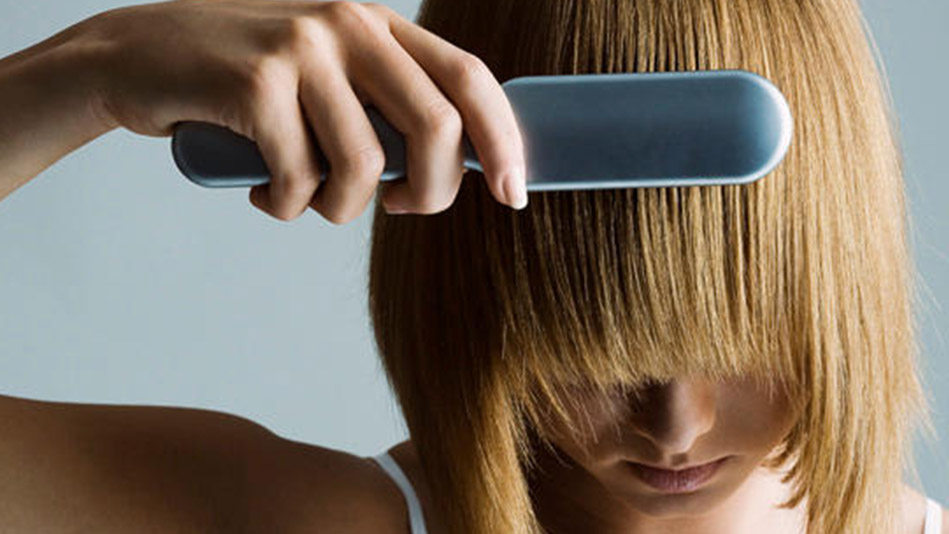The Truth About Hair Loss

Photo: Esthalto/Frederic Cirou/Getty Images
Every month our beauty department in-box fills up with e-mail from readers struggling with some aspect of their appearance. But none of the mail is as emotionally charged as the letters from women dealing with hair loss—an issue that will affect up to 60 percent of us at some point. Yikes. The good news: "In almost all cases, you can get improvement, even if it's just stopping further loss," says trichologist (hair and scalp specialist) David Kingsley, PhD. "And about 80 percent of the time, regrowth is a possibility."
When it's temporary... If your thinning is triggered by a specific event—childbirth or a high fever or a period of intense stress—it will probably manifest as excessive (more than 100 hairs a day), and sudden, allover shedding. Once the trauma passes, your hair will grow back within a few months. And if a blood test traces your widening part to a thyroid imbalance, endocrine disorder (like polycystic ovarian syndrome), dietary deficiency, or a specific medication, your hair will most likely return to its former glory once the underlying issue is addressed.
When it's chronic... The most common cause of female hair loss is androgenetic alopecia, a genetic condition in which new hair shafts grow in progressively thinner. Women usually notice a wider part and gradual reduction in overall volume, often with a concentrated thinning at the crown. The condition can begin any time after puberty but often becomes noticeable during and after menopause, when it's compounded by hormonal shifts.
The first step in minimizing the fallout is working with a doctor to identify why your hair is thinning. If androgenetic alopecia is the culprit, you won't achieve full regrowth, but you can effect improvement with one of the following treatments:
Minoxidil: (brand name: Rogaine). The only FDA-approved medication for female hair loss. Applied topically, minoxidil prolongs the hair's growth phase. It's available over-the-counter in 2 and 5 percent formulas. Only the lower dose is approved for women, but many doctors recommend using the higher dose (though it carries a risk of increased facial hair growth). Massage minoxidil into the scalp twice daily; regrowth should appear in about six months (a three-month supply costs around $50). If you stop treatment, hair density returns to what it would be if you had never used the medicine.
Finasteride: (brand names: Propecia and Proscar). This prescription-only pill is not FDA approved for women, but some doctors prescribe it off-label to postmenopausal patients. (It's generally avoided for women of childbearing age because it can cause birth defects.) The higher dose (in Proscar) is usually more effective in women, says Winston-Salem dermatologist Amy McMichael, MD, who finds it slows hair loss in 75 percent of her postmenopausal patients. Finasteride is taken daily and works only as long as you're using it. (A one-month supply costs about $70.)
Lasers: There are no large independent trials proving the efficacy of light sources in treating hair loss. But for patients who have not had success with minoxidil or finasteride, some doctors suggest the HairMax Laser Comb ($495). Of several OTC handheld lasers marketed for hair growth, it's the only one with FDA approval. You glide it over your scalp for ten to 15 minutes three times a week. "After about six months it can grow some hair in about 25 percent of cases," says New York City dermatologist Marc Avram, MD, who did a small trial on the device in his office.
Hair transplant: A possibility if your hair loss is concentrated in specific areas. Hair follicles (in groups of up to four) are surgically removed from an area on your scalp where growth is dense and then implanted in the thinning patches. Since female hair loss is often diffuse, only about 20 percent of female patients with thinning hair are candidates, says Robert Bernstein, MD, a New York City dermatologist who specializes in these surgeries. (The price tag can run from $3,000 to $15,000.)
Thickening tricks: Most hair loss treatments take anywhere from three months to a year to yield results. In the meantime, a few styling techniques can create the illusion of a thicker head of hair. Keep your length above shoulder level, and consider a blunt cut (ends will look less wispy). If your hair is thickest in front, deep bangs can conceal thinning at the crown. Coloring your hair helps, too, because the dye swells the hair shaft. Choose a shade that's close to the color of your scalp (if you have dark skin, don't go blonde; if you're pale, keep your hair light). And stay on top of your regrowth—noticeable roots draw attention to a wide part.
African-American women with thinning hair might think it's a genetic issue, but they may in fact be dealing with a more common reason for hair loss: central centrifugal cicatricial alopecia. Its exact causes are unknown, but if the condition is left untreated, bald patches can form. Both topical and injected steroids can help stop the progression.
More O beauty tricks: The best haircut for fine or thinning hair
More questions? Submit them to our beauty department inbox!



